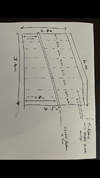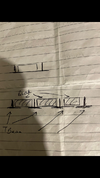The outhouse is block built with I beams supported across roof span.
Between beams are blocks again .
Just like a house foundation ..
Then dpm sheet over the blocks & 8mm mesh supported on 40mm stand off blocks.
So we’d like to know about the weight of concrete and load acceptable to finish the roof off?
We wanted 4inch with a slight run off down to 3.5”.
The concrete guys said it’s about 5 tonnes of concrete that we need .
This sounds a lot, but we know our works solid.
We’ve even fitted a strengthening steel under the beams , inside the outhouses ceiling . It’s running diagonal on ceiling & supported on 2 walls.
So any thoughts if we need to reduce the depth of concrete?
Between beams are blocks again .
Just like a house foundation ..
Then dpm sheet over the blocks & 8mm mesh supported on 40mm stand off blocks.
So we’d like to know about the weight of concrete and load acceptable to finish the roof off?
We wanted 4inch with a slight run off down to 3.5”.
The concrete guys said it’s about 5 tonnes of concrete that we need .
This sounds a lot, but we know our works solid.
We’ve even fitted a strengthening steel under the beams , inside the outhouses ceiling . It’s running diagonal on ceiling & supported on 2 walls.
So any thoughts if we need to reduce the depth of concrete?



